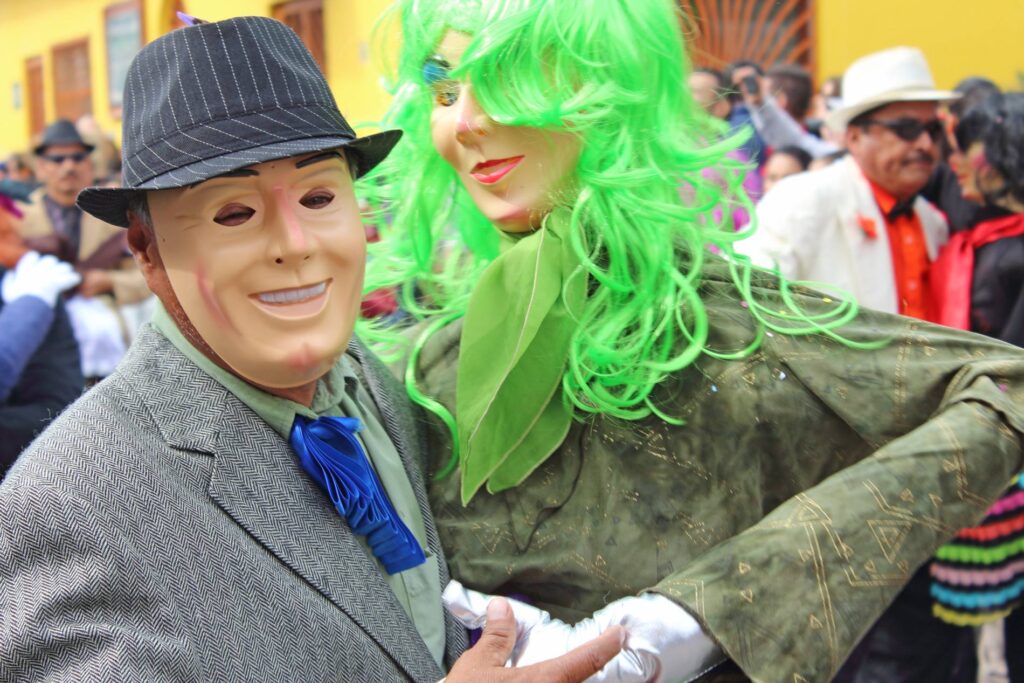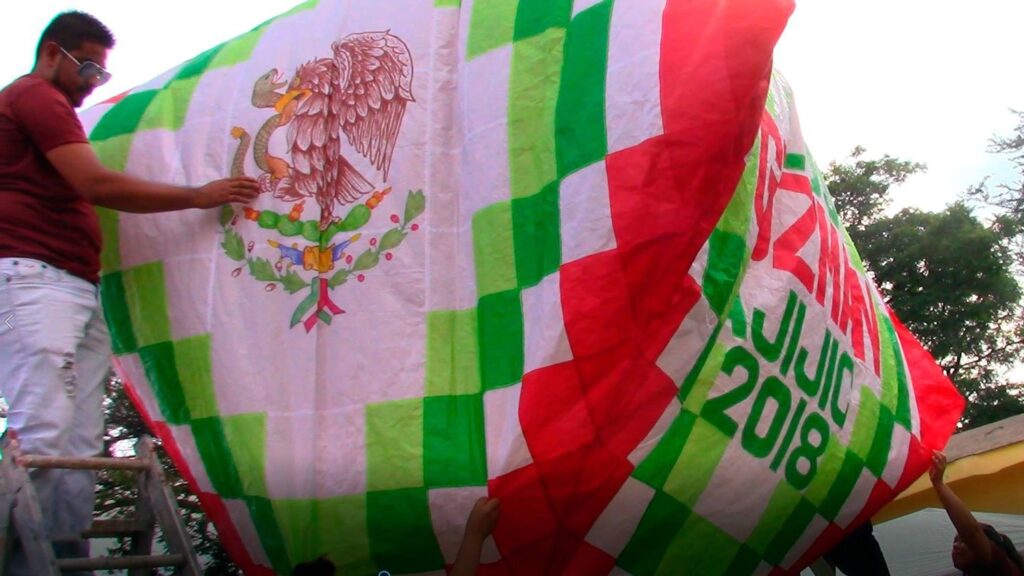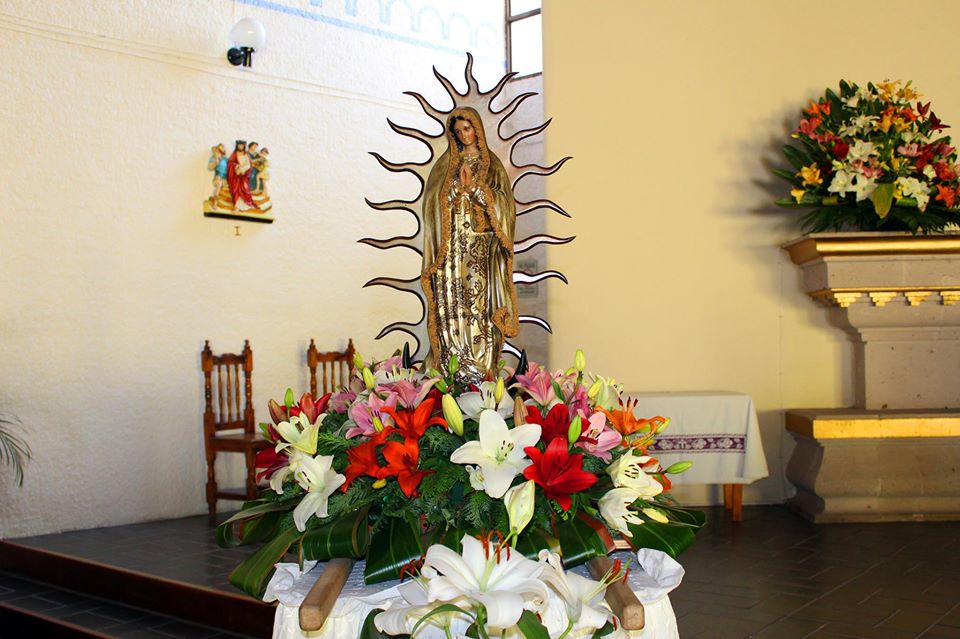Every September, Ajijic dresses up for one of the most anticipated events for locals and visitors alike: Uses and Customs of the Rebozo. What was once a simple parade of women wearing this Mexican garment has now transformed into a cultural celebration that fills the Main Plaza with music, color, and tradition. The event is not just a textile showcase, but a living tribute to the town’s identity — a gathering where generations come together and collective memory becomes a spectacle.
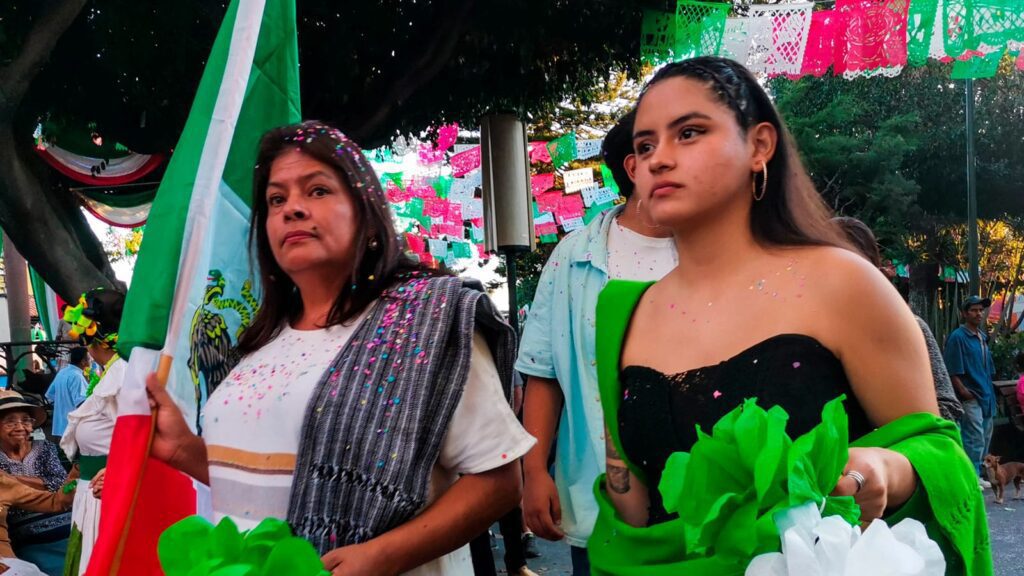
The rebozo, with over four centuries of history in Mexico, has accompanied women through every stage of life. It has served to carry children, as a wrap on cold mornings, as formal wear at celebrations, and even as a sacred element in religious rituals. Its value goes beyond aesthetics: it is a symbol of resistance, belonging, and pride. In Ajijic, this garment became the centerpiece of an event that has evolved over the years, without losing the essence that gave it life.
The history of the rebozo in Mexico
To talk about the rebozo is to talk about Mexico. This garment is not just a piece of cloth: it is a living symbol of identity, tradition, and pride. Its origins date back to the 16th and 17th centuries, when the mixing of cultures gave birth to something unique. From indigenous huipiles, Spanish shawls, and Oriental textiles brought on the Manila galleons came a versatile piece that would accompany Mexican women throughout their lives.
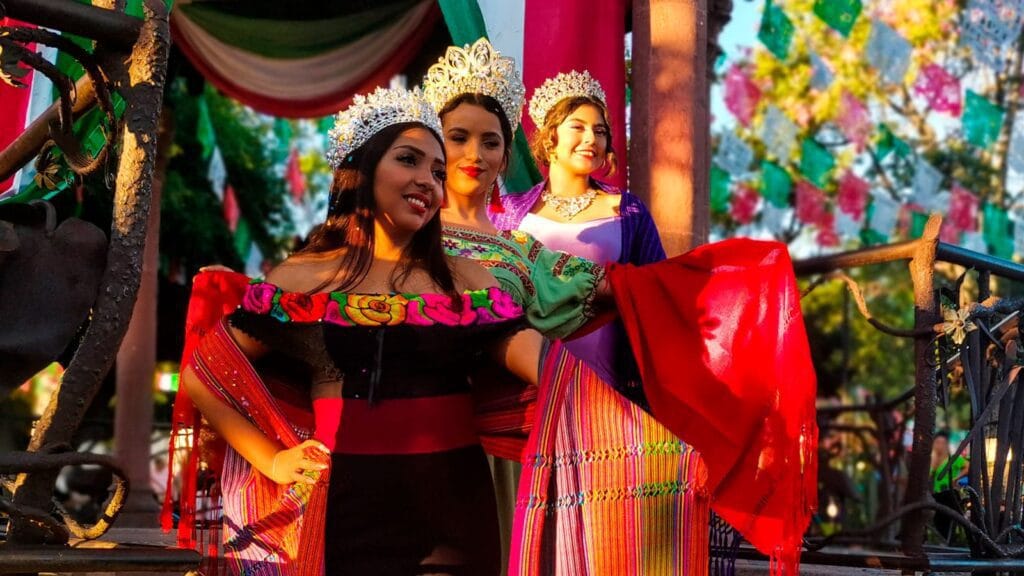
The rebozo soon became much more than an accessory. It was warmth during cold mornings, an improvised cradle to lull children to sleep, an ally at festivities to enhance elegance, and even a shroud for funerary rites. A garment that, literally, was present from birth to death, reflecting in each design the identity of a region, a town, and a woman.
In the 18th and 19th centuries, its presence became so prominent that it appeared in portraits, novels, and in the eyes of travelers fascinated by the grace with which Mexican women wore it. Behind each piece were expert hands: the reboceras, artisans who, with infinite patience, wove threads of cotton, wool, or silk into true works of art.
The 20th century gave the rebozo a new role: that of nationalist and revolutionary symbol. It was not only worn by everyday women; iconic figures like Frida Kahlo and the brave “adelitas” also adopted it, carrying it into battle as both a tool and a banner of identity. The rebozo thus moved from being a daily garment to becoming a cultural emblem.
Today, although it has lost prominence in big cities, in traditional communities it remains an essential element. And what’s most exciting is that it has not been left in the past: contemporary designers have reinterpreted it on runways and in modern collections, proving that the rebozo is not a relic, but a legacy that reinvents itself with each generation.
In the end, the rebozo is not just woven fabric: it is history, art, and memory. And each time someone wears it, a tradition that has wrapped the heart of Mexico for centuries is brought back to life.
Origin and first steps
The parade began as a community initiative in which a group of women decided to revive the tradition of the rebozo as an essential part of local identity. At first, participants simply walked through the main streets, showing off pieces that had been inherited or made by local artisans. It was a simple way to remind everyone that the rebozo should not be relegated to the past, but remain a living symbol of culture and pride.
What began as a modest gesture soon became a much-anticipated annual event. The enthusiasm of families, the support of cultural associations, and the participation of both young and old allowed the celebration to grow, incorporating new artistic expressions and expanding its reach. Thus, the parade stopped being an isolated act and became part of the major festivities that mark Ajijic’s calendar.
Uses and Customs of the Rebozo in Ajijic: the evolution of the event
The transformation of the parade into what we now know as Uses and Customs of the Rebozo is a reflection of Ajijic’s rich culture. Over the years, the community understood that the rebozo could not be presented in isolation: it needed to be framed within the broader context of all the traditions that give the town life. Gradually, other festive elements were incorporated — those that live on in the collective memory — such as the Carnival sayacos, Day of the Dead altars, Guadalupe festivities, and December posadas.
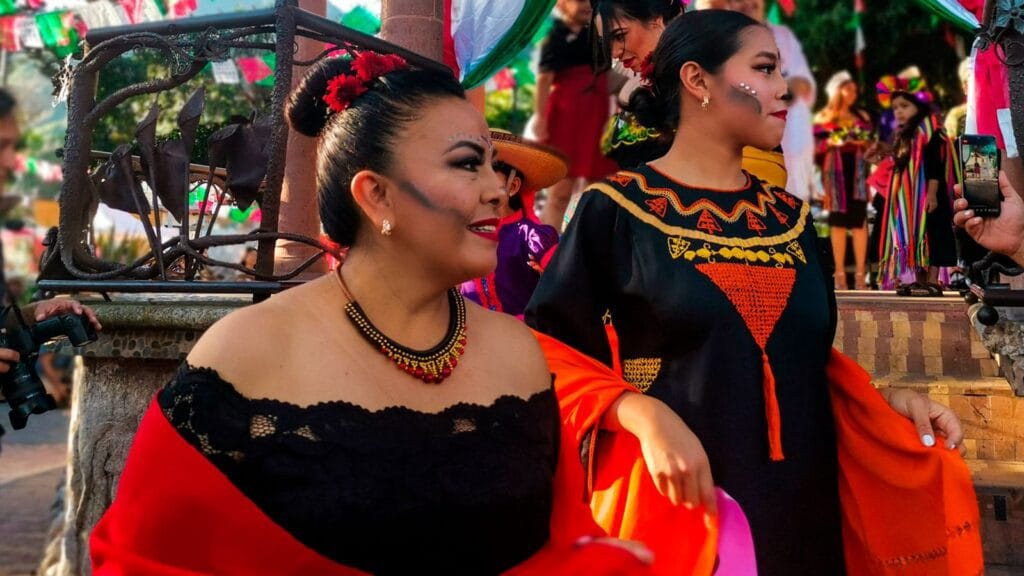
The Main Plaza, the heart of the event, became the natural stage for this evolution. The gazebo, the arcades, and the surrounding streets transform into a runway of identity, where the rebozo shares the spotlight with folkloric dances, mariachi music, and charros. The atmosphere is unique: visitors are not mere spectators, but part of the celebration, surrounded by the aromas of local snacks, live music, and the contagious joy of a town proudly displaying its roots.
The new name of the event, Uses and Customs of the Rebozo in Ajijic, reflects this evolution. It is no longer just a parade of garments, but a comprehensive celebration of the many ways in which the rebozo is embedded in daily life. The public doesn’t just view the garment as an aesthetic piece — they are reminded of its role in child-rearing, traditional dances, religious ceremonies, and even in farewell rituals for the deceased. Each use is a cultural imprint that is reactivated and shared with those who participate.
The parade is also a generational bridge. Young girls walk with newly woven rebozos, while older women wear pieces with decades of family history. Young people participate as musicians, organizers, or visual chroniclers, capturing in photos and videos a tradition that breathes and evolves each year. The entire community becomes the protagonist of a ritual of belonging, ensuring that the tradition is not only preserved but renewed with each edition.
A garment that tells stories
The rebozo is not just fabric: it is heritage, memory, and identity. Each piece holds a unique story — from the grandmother who wore it at her wedding to the mother who used it to carry her children. The designs and colors also speak of specific regions and styles, turning each rebozo into a kind of cultural document. In Ajijic, that diversity is on full display during the parade, where antique pieces coexist with new creations made by artisans who keep the craft alive.
For those who participate, wearing a rebozo in the parade is not just dressing for the occasion. It’s a way to honor their ancestors, reaffirm their identity, and present themselves to the world as part of a tradition that transcends them. It is also an opportunity to remember that behind every garment are hours of artisanal labor, patience, and dedication — a craft still passed down from generation to generation.
Beyond the parade
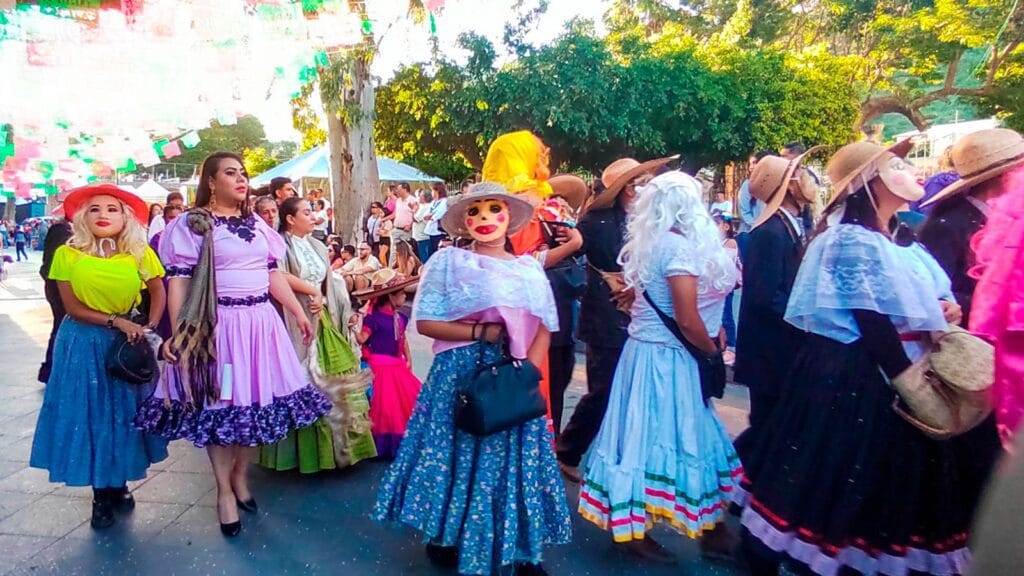
The rebozo celebration is part of a festive season that begins in September and continues until the end of the year. Ajijic comes alive with the Cry of Independence, the Rebozo Parade, religious processions, and Day of the Dead — forming a cultural mosaic that turns the town into a magnet for those seeking authentic experiences in Mexico. Uses and Customs of the Rebozo marks the beginning of this cycle, opening the door to months of tradition, celebration, and community gatherings.
An event you can’t miss
Anyone who attends Uses and Customs of the Rebozo in Ajijic is unlikely to forget it. The energy in the plaza, the beauty of the rebozos swaying in the wind, and the music filling every corner make this an unforgettable experience. Whether you experience it as a visitor or a member of the community, witnessing this celebration brings you closer to Ajijic’s cultural heart.
If you’re planning to visit the town in September, be sure to save a spot in your calendar for this event. You won’t just enjoy a colorful and traditional show — you’ll also take with you a piece of Ajijic’s identity, a reminder that Mexican culture is alive and beating strongly in every corner of this Pueblo Mágico.
Practical tips to enjoy it
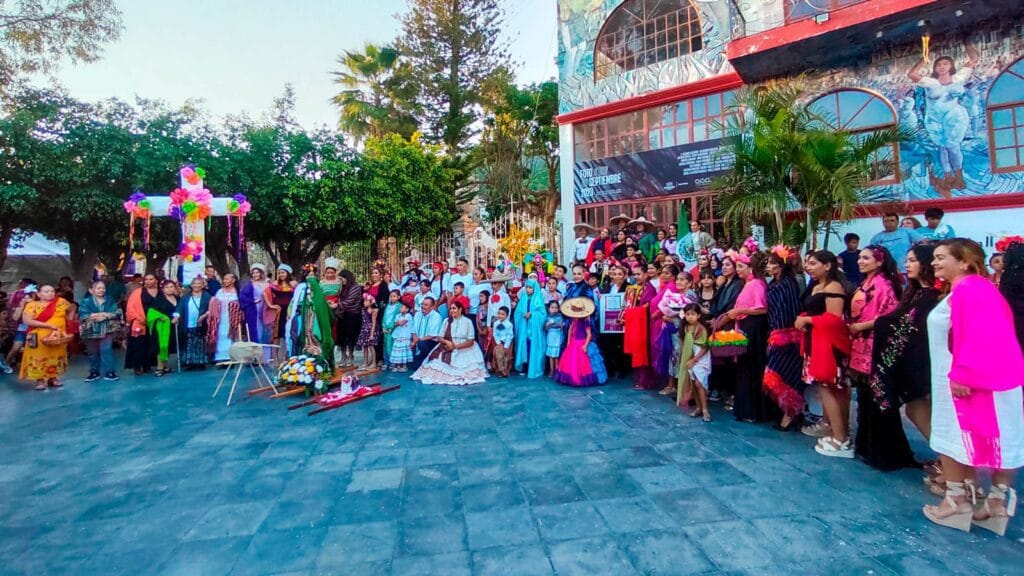
If you plan to attend the Rebozo Parade in Ajijic, here are some useful tips:
- Arrive early to get a good spot near the gazebo.
- Bring an umbrella or hat, as September is rainy season.
- Have your camera or phone ready to capture unique moments.
- Try the local food: typical snacks like elotes, tamales, or churros accompany the festivities.
- Participate actively: clap, sing, dance, and share your experience on social media with #DesfileDelRebozoAjijic.
Conclusion
The Rebozo Parade in Ajijic is more than an event: it is a living reminder of who we are as a culture and how communities preserve their essence over time.
It is identity, memory, and pride.
It is community, celebration, and resistance.
It is Ajijic beating to the rhythm of its tradition.
If you ever visit this Pueblo Mágico in September, don’t miss the chance to experience it. You won’t just be a spectator — you’ll be part of a story that continues to be woven, thread by thread, like the rebozos that inspire it.

